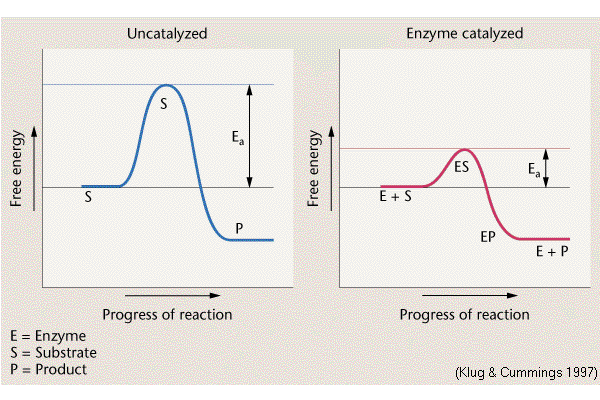
Uncatalyzed versus enzmatically-catalyzed cellular reactions

In the absence of a catalyst (left),
conversion of a substrate (S) to a product (P)
requires the input of a large energy of activation (Ea).
For example, many reactions will proceed when heated: the albumin
protein in an egg coagulates when boiled.
However, the amount of energy required is typically incompatible with
most
cellular
processes: most biological systems will not survive boiling.
In the presence of
an enzyme catalyst (E) (right),
an enzyme / substrate complex (ES) forms, for which the
required Ea is much less, and the reaction can proceed
under
physiological
conditions. When the reaction is complete, the enzyme is released
unchanged,
and can be recycled for use in subsequent reactions.